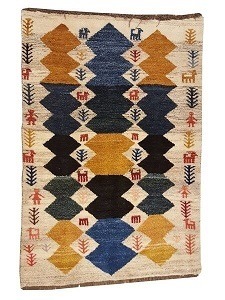Contents
About Of Iranian Carpets (Persian Carpets and Persian Rugs)
The authenticity of the Persian carpet goes back about 2500 years. Iranians were among the pioneers of the ancient carpet weaving. Tracing the history of Iranian carpets is one of the greatest civilizations the world has ever seen.
Traditional Iranian carpets and hand-made carpets have been used for nomads in the past, using the tools needed for sewing and texturing Iranian carpets and hand-made carpets for their own purposes, such as cold and heat insulation in winter and summer and to prevent moisture. Beauty was also used. Persian carpets have also been used by kings and princes in ancient times as a symbol of wealth, power, prestige and distinction.

The earliest evidence of Persian carpets came from Chinese texts from the Sassanid period (641 – 224 AD). However, in Greek historiography there is written evidence of the existence, value and quality of Persian carpets.
The materials used in carpets, such as wool, silk, and cotton, are decayed after several hundred years. Therefore archaeologists are rarely able to find very useful discoveries during archaeological excavations of Iranian carpets.
There are several uses for carpets in Iran. Most Iranians spread the carpet completely on the floor of their house and walk around the house without shoes.
Another use of carpet is decorative. “Carpet frame (tablo farsh)” is one of the favorite accessories of Iranians.
History Of Iranian Carpet
The oldest Iranian hand-woven carpet was discovered in 1949 in the second phase of Russian archeological excavations, Rudenko in the Pazyryk region, and was called the Pazyryk carpet.
In a 1953 book published in Russia on the occasion of these discoveries, Rudenko wrote detailed explanations of the discovered carpet and explicitly described it as the work of Iran and the oldest Iranian carpet in the world. He wrote: “Without being able to say for sure which of the Medo-Parthian lands (ancient Khorasan) or Persia this work is, the history of the carpet and the fabrics discovered in Pazyryk dates back to the 5th or early 4th century BC. It will be recognized.”
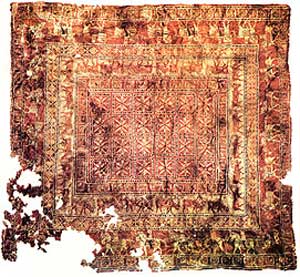
The reason for the popularity of Iranian carpets
One of the main reasons why Iranian carpets have received more attention in the world and have more customers is that they have more variety of colors than carpets produced in other countries. The quality of materials used in them is better and better. It has a special use in it and the colors look vivid and natural, its patterns and drawings are attractive and it has a special charm that is eye-catching for the viewer and the buyer. All these factors have been effective in this regard and have made the Iranian carpet have its own fame and popularity.
Types Of Persian Carpets Design
Types Of PersianRugs
Botthe Jogheh Carpet
In this carpet, tilting beetles can be seen in different shapes and sizes. The botteh jogheh design is inspired by the cedar tree.
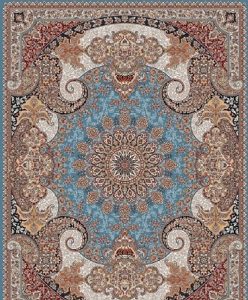
King (Shah) Abbasi Carpet
The main role of this type of carpet is formed by special flowers known as King Abbasi. A prominent feature of this carpet is the presence of many petals. On the fringe of the carpet, the branch and leaf designs are also Eslimi.
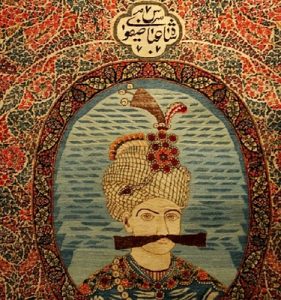
Eslimi Carpet
Eslimi is one of the designs of an Iranian carpet in which rotary branches are placed between the leaves. One of the most famous designs of this carpet is the dragon, in which the ends of the branches turn into two symmetrical branches and represent the jaws of the dragon. On the branches there are sprouts in different parts called Eslim. If you see regular, twisted branches on a rug, be sure that its design is Eslimi.

Adobe (Kheshti) Carpet
this carpets also known as adobe carpets, have numerous frames in which different images can be seen. It is like a wall full of photo frames that are all equally aligned.
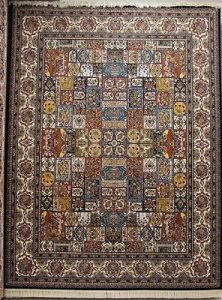
Hunt (Shekar) Carpet
The highlight of this design is the presence of a bow and arrow and a man on horseback.
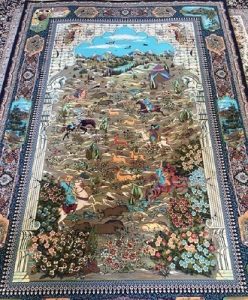
Afshan Carpet
The carpet design is such that the branches, flowers and leaves are scattered throughout the carpet. There is a great deal of variation in Afshan designs today, and sub-designs have diverged from them, including AfshanBandi, Afshan GolAnari, Afshan ShakhePich, Afshan ToranjDar, and more.

Tree (Derakhti) Carpet
In all Iranian carpets, flower and tree designs are used extensively, but in tree carpets, the main composition consists of small and large shrubs that are individually embedded and blended with other elements. The tree design is known as Derakhti ToranjDar, Derakhti Goldani, Derakhti Janevari, Derakhti AbNama.
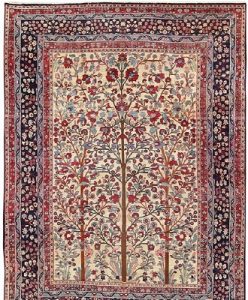
Derivative (Eghtebasi) Carpet
It is very similar to carpets in neighboring countries, and carpet weavers have skillfully created and changed new designs. Among them are Caucasian and Goeblen.
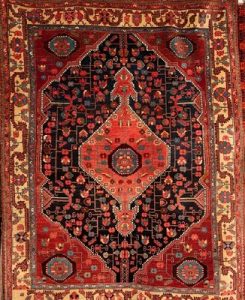
Geometric (Hendesi) Carpet
It has geometric designs and angled lines such as Hendesi Khataei, Hendesi Joshaghani, Hendesi Khatam Shirazi, Hendesi Kaf Sadeh, Hendesi Setarei.
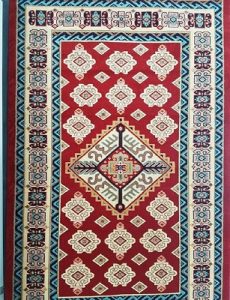
Islamic and Antiquities Carpet
This designs are inspired by buildings and tiles and geometrical and decorative forms of buildings. Throughout history, carpet designers have infiltrated and mastered the original designs. The most famous of this works include Sheikh Lotfollah Mosque, Mehrabi Kufi, Kabood Mosque, Sheikh Safi’s Tomb, Imamzadeh Mahrouq Sardar, Gonbad Qaboos, Shah Isfahan Mosque, Takht-e Jamshid, Taq Bostan, Kasrai Arch (Ivan Madaen).
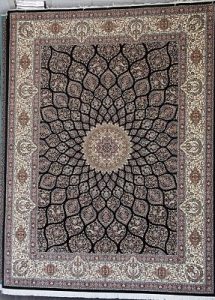
Bandi Carpet
A small piece of a pattern repeats throughout the rug. Because this pieces join together in the iteration phase, they are called segments or divisions.
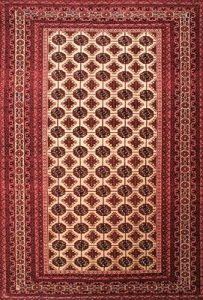
GolFarang Carpet
All designs in this group are based on natural flowers, especially roses with very bright colors such as yellow, blue and red.

Pot (Goldani) Carpet
In pot design, the pot shape is often seen in different sizes. Sometimes a large flower-filled pot covers the whole carpet. Sometimes small pots are symmetrically wrapped around the text or around the text.

Altar (Mehrabi) Carpet
The main design in this group is based on the altar. The same place in the mosques is the place of prayer of the Imam of the congregation.
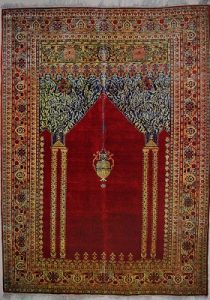
Mahi Darham Carpet
The scrambled fish is one of the oldest and most common designs in Iran. The design is often in the form of a carpet and the weaver repeats the same carpet throughout the width and width of the carpet.
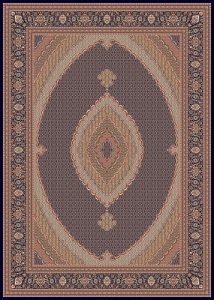
Moharramat Carpet
A pattern is that parts of a map are repeated along the rug, and the width of the rug in the text is divided into several rows and each row continues from the specified color and pattern from the beginning to the end of the rug.
This designation is known in some parts of Iran as Ghalamdani.
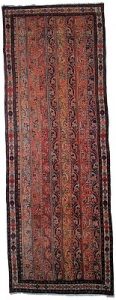
Blended (Talfighi) Carpet
It is obtained by combining several designs in previous models.

Turkmen or Bukhara Carpet
The design of Turkmen carpets is geometrically fractured and fractured in line with the designs of the nomadic people, woven mentally and without a map.

Gabbeh
Gabbeh is a handmade carpet with an abstract design and colored background using geometric shapes. Gabbeh is usually made by women. Gabbeh carpets are much thicker and larger than other Iranian carpets. Gabbeh is made from natural handmade wool yarn and all colors are made from the natural color of the plant. Because of its more precise pattern and few knots, Gabbeh is one of the inexpensive types of Persian carpets. Carpet patterns are a simple type with only a few decorative elements, mostly rectangular containing animals.
Indian weavers have been quick to copy these carpets, but one must note that there is a major difference between a Persian and a Hindu Gabbeh. Most of this can be attributed to the quality of the wool that is remarkable, the Persian type is much softer as well as much more durable and its quality is definitely better.
Rug (Glimm or Kilim گليم)
Khlim is an embroidered braid traditionally produced in the countries of the former Ottoman Empire, Iran, the Republic of Azerbaijan and the Central Asian Turkish countries. Kilim can be purely decorative or can serve as prayer rugs. Modern Glimm are used as common flooring in western families.
Jajim
Jajim is a flat woven, made in a very slim, long model, woven almost by a woman from beginning to end. It is usually horizontal. Jajim is built in many areas throughout the country such as East Azerbaijan, Ardebil, Kermanshah, Kurdistan, Hamadan, Lorestan, Mazandaran and Fars.
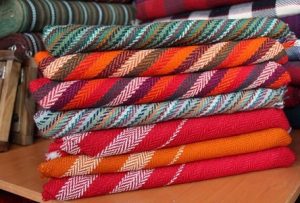
Tabriz Carpet
This traditional Iranian carpets are high quality wool, silk and cotton or silk threads. This patterns range from tear drops to flowers, trees and hunting scenes.

Heriz Carpet (Heris)
This traditional Iranian carpets are distinguished by their brilliance. Harris carpets are very high quality. Harris carpets come with double or triple designs and large corner pieces.
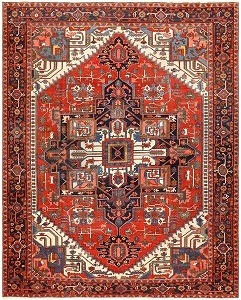
Kashan Carpet
The large and corner medal pattern in a flower farm with an ornamental pattern are trademarks of Kashan Carpets. The colors used in the design are usually a combination of deep blue, rich red and ivory with the occasional yellow, green and burnt orange slot.
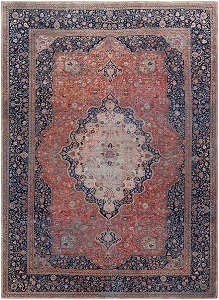
Isfahan Carpet
Esfahan carpet design is very balanced and symmetrical. Typically it consists of a rose, indigo, or blue rose surrounded by vines and woven on ivory.
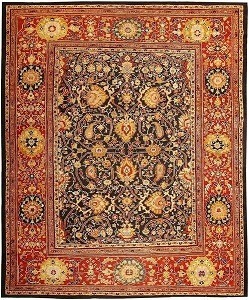
Shiraz Carpet
Shiraz carpet designs are usually based on tribal weavers, so they imitate the designs of Qashqai, Khamish (Basri and Arab Khamis), Afshar, Abadeh and Lori. Carpet of Basari tribe, one of the Persian tribes of Fars province, is famous for its colorful designs. Orange is a special color for visual carpets.
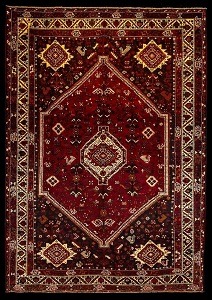
Hamedan Carpet
The best Hamedan rugs are sold under their names such as Nahavand, Tuyserkan, Malayer or Husseinabad. Among the individual patterns, Herat is the most common pattern. Colors are dominated by the nuances of blue and red.
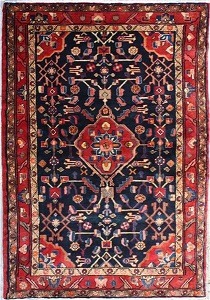
Naein Carpet
Naein carpets are made of very good quality and very fine wool. Very complex patterns are usually composed of intertwined branches of blue or green with small, large flowers with a white ivory or white background.
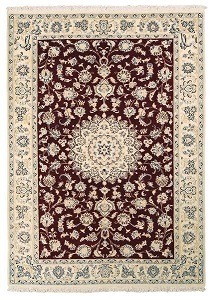
Mashhad Carpet
Mashhad carpets usually have a single large medallion of King Abbasi in the center with intricate and full of floral motifs in the curved design. this rugs are usually very large with wool candles and a cotton base.

Baluch Carpet
Due to the tribal origin of the Baluchi people, you will rarely find large Baluchi rugs. this small carpets have simple geometric patterns and are woven with sheep’s wool in dark blue or red.

Qom Carpet
Qom carpets are very high quality traditional Iranian carpets, tightly tied to silk or cotton and intricate motifs that include a mix of flowers, birds, medals, hunting scenes and dark blue, reddish gardens. Or orange. Turquoise is always used in some elements in Qom carpets.
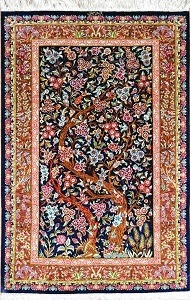
Varamin Carpet
Varamin carpets have geometric patterns with medallion patterns. The main colors used in varamin carpets are usually dark brown and dark red or dark blue backgrounds. The most common design among Varamin carpets is the “Minakhan” design. The base of this rugs is more than cotton.
Qashqai Carpet
Qashqai carpets provide a unique approach to the Iranian carpet market. Qashqai rugs are adorned and bold. Full designs are paired with bright colors in combination. . The base of this rugs is more than wool. Other than red, other colors commonly found in a Qashqai rug are dark blue or yellow.
Ardabil Carpet
Ardabil Carpets is a pair of famous Iranian carpets at the Victoria and Albert Museum Collection in London and the Los Angeles Museum of Art. Its foundation is made of silk with wool.
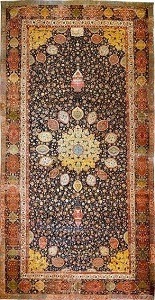
Northern Carpet
Kelardasht, Turkmenistan port, Rudbar, Qazvin are the most famous cities in the region. All carpets in this area have triangular patterns. All Turkmen carpets have geometric patterns. Dark red is the dominant color in Turkmen carpets. Qazvin carpets usually have curved patterns. Dark red and blue are the dominant colors and the ivory forms a beautiful contrast.
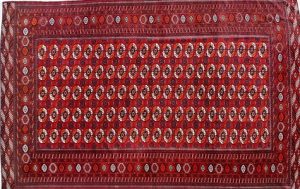
Bakhtiari Carpet
Bakhtiari carpets are woven in Chahar Mahal and Bakhtiari province in western Iran. The pattern of Bakhtiari carpets is mainly geometrically curved, sometimes semi-geometric and rarely curved. What distinguishes Bakhtiari rugs from other rugs is that they are colorful and bright. Common colors include deep red, green, brown, pear and beige. Bakhtiari’s very fine carpets are sometimes referred to as “bibibaf” which means “a woven woman” in Persian. The name of the Bakhtiari carpet is “Chaleshtar”.
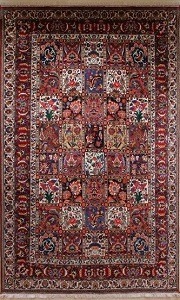
Bijar Carpet
Bijar is the name of a small Kurdish town in western Iran. Kurdish carpets are often very strong and compact. Its most common patterns are Herat (also called fish pattern), but medals and floral motifs also occur.
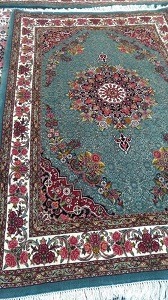
Zanjan Carpet
Zanjan is located in northwestern Iran. Zanjan carpets are famous for their rich, bright and strange colors. The basis of these rugs is either cotton or wool. Dark red, brown and light blue are used with geometric patterns that look very much like carpets.
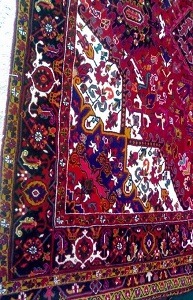
Sultan Abad Carpet
Sultan Abad carpets are manufactured in the Arak area, with a mid-17th century carpet weaving history. SultanAbad carpets are made using deeper blue and reds with white backgrounds. This design is done with good symmetry and interesting floral motifs.

Malayer Carpet
Malayer carpets were woven in the small Malayer town south of Hamadan on the Arak road. The designs range from diamonds or hexagons to all-round patterns like the classic Harati pattern. Malayer rugs made using dark red blues.
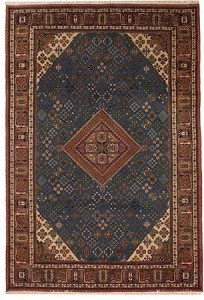
….

